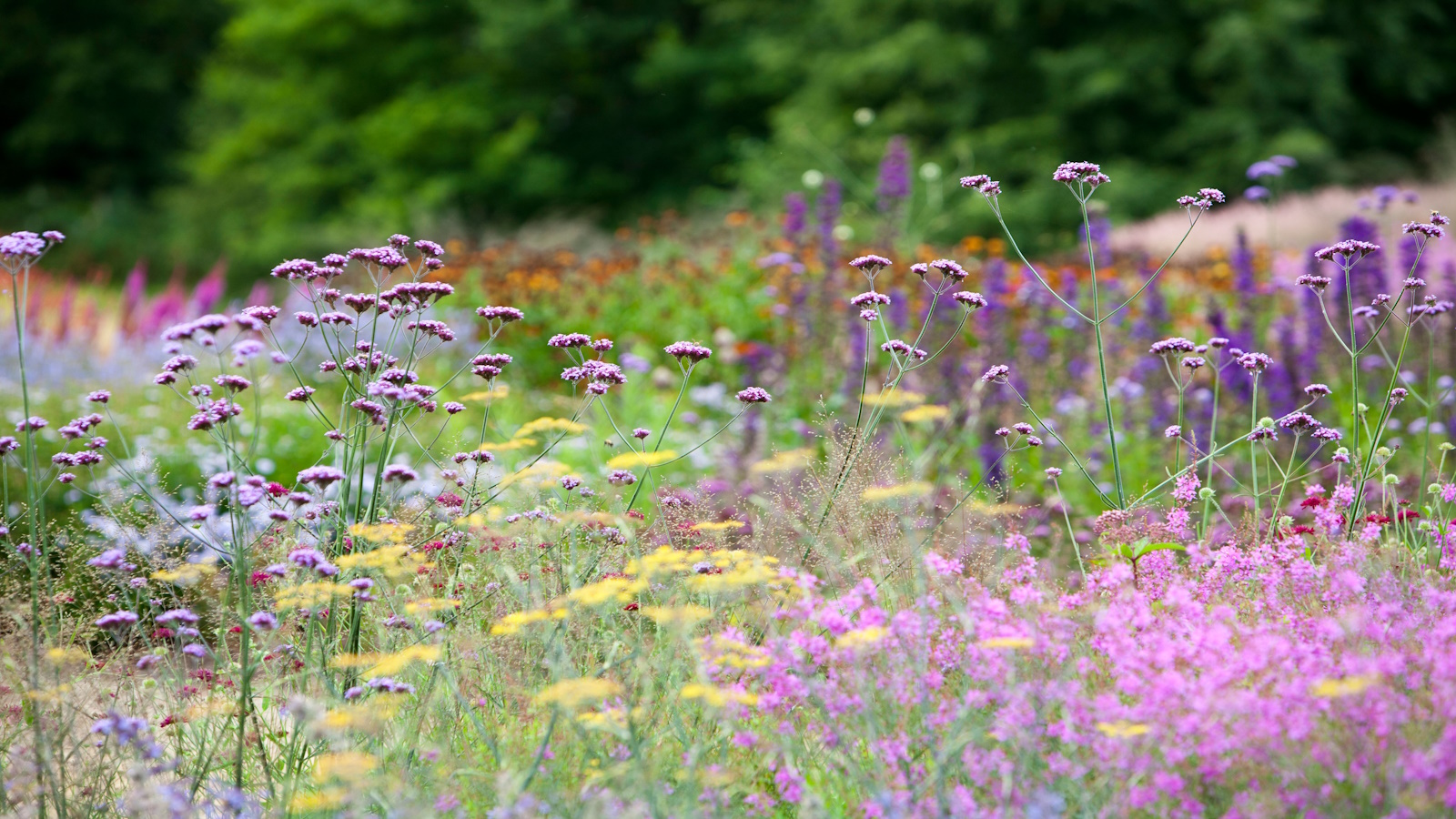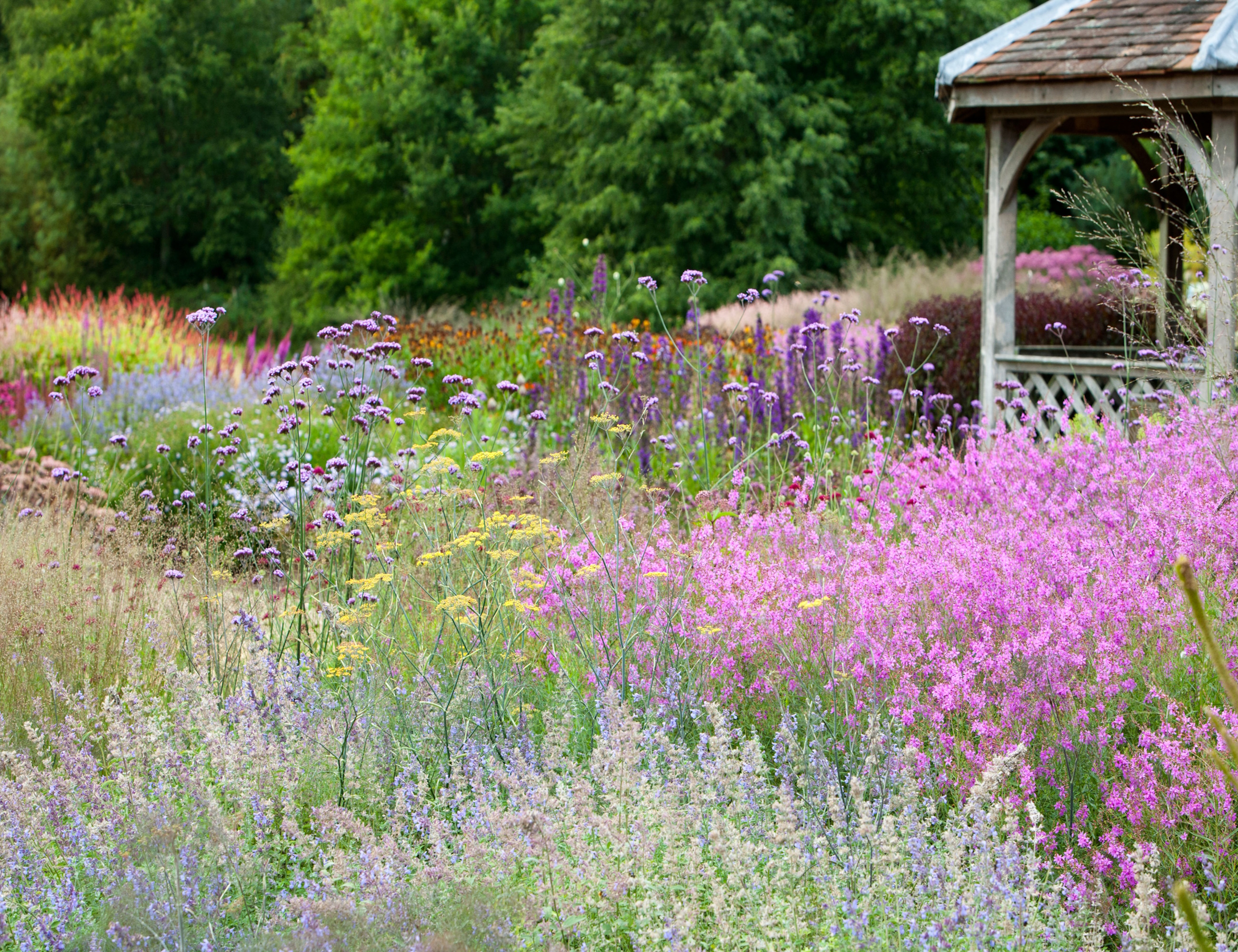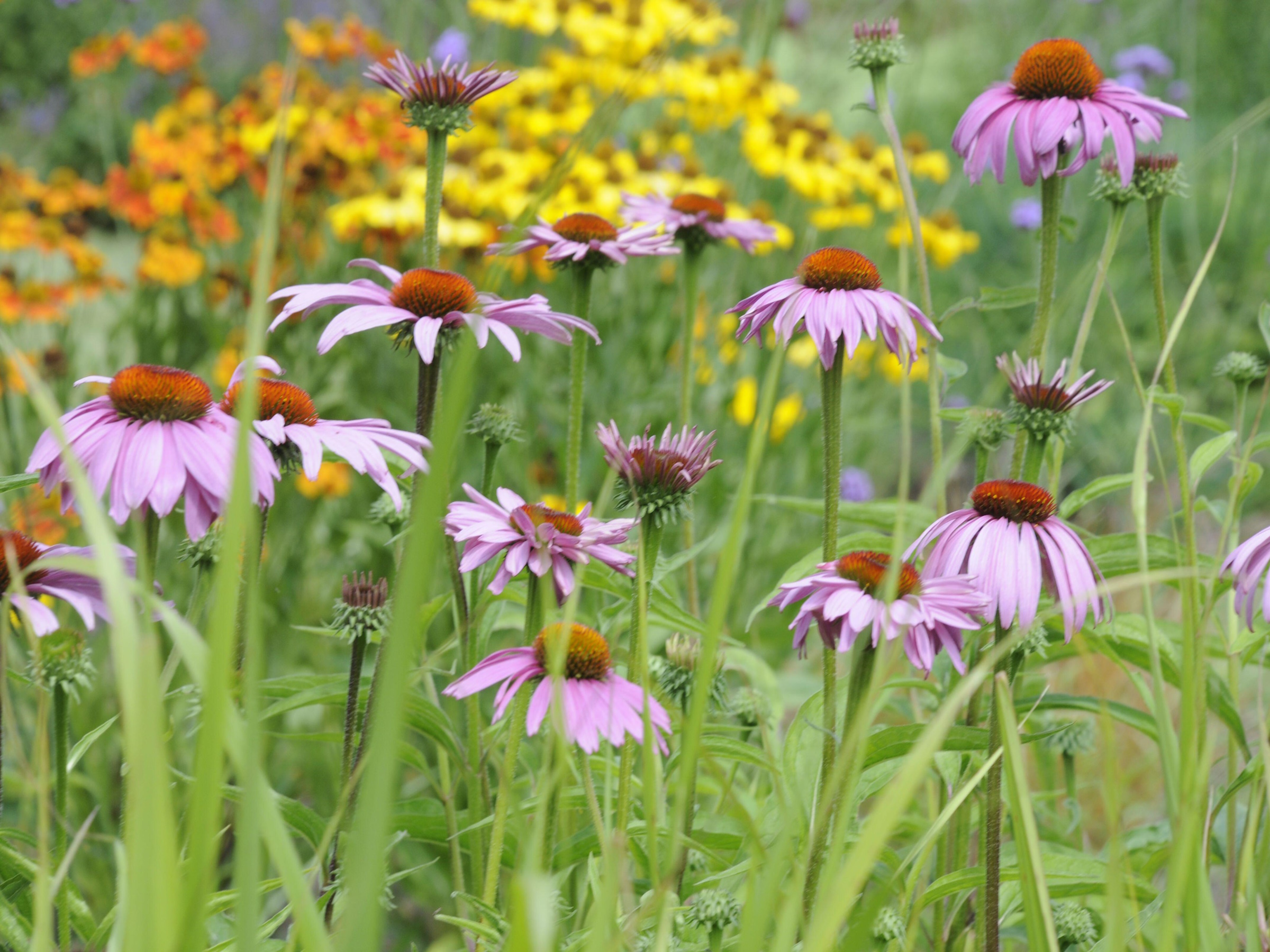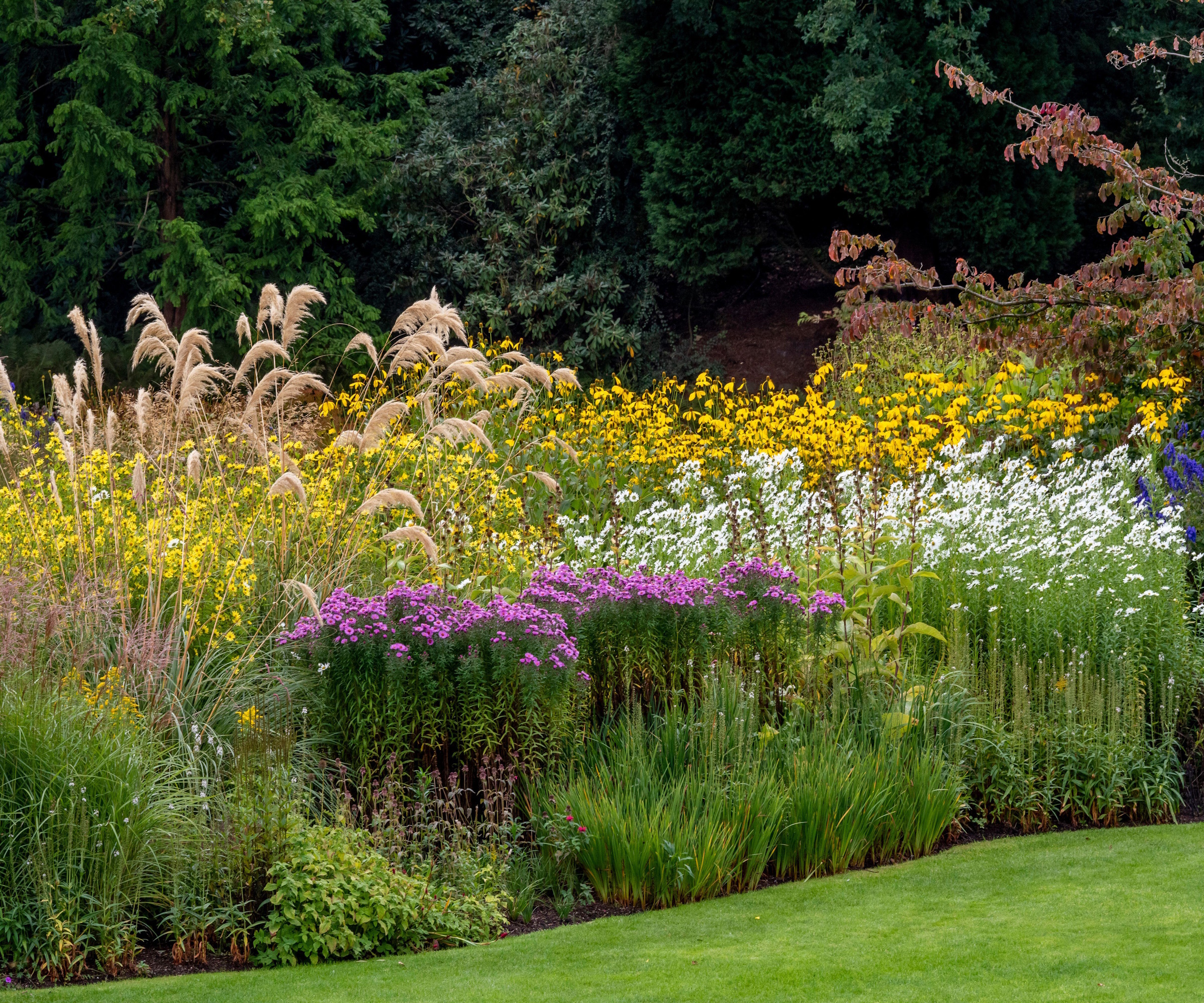
The new perennial movement is a style of planting that is instantly recognisable for its soothing mass of swaying grasses peppered with gem like flowers. Reminiscent of an area of flower-rich prairie or wildflower meadow, it consists of little structure and interest other than the plants themselves and has been steadily captivating the admiration of both landscape architects. designers and gardeners alike.
Popularised in 1990’s by author Noel Kingsbury in his book ‘The New Perennial Garden’, the work of Wisconsin based Roy Diblik and Dutch plantsman and designer Piet Oudolf, this planting style celebrates ephemeral and natural beauty of perennial plants and showcases their seasonal life cycle from fresh growth in spring, vibrant summer blooms through to their seedheads and decline in fall.
The key to the success of this nature-led look is to select plants suited to the local soil and climate and to arrange them to create impact and a gentle tableau of everchanging color, texture and seasonal interest. Tempted to find out more and see if this planting approach can transform your backyard ideas? Our experts are on hand to share their plant passion and design advice.

What is the new perennial movement?
Discover what landscape architects say about creating the key features of this look in your own outdoor space.
What is this style of planting - and how to spot it

Consisting of perennial grasses, blooms and flowering bulbs, this naturalistic look is all about working with nature and letting the plants essentially mingle and look after themselves. With few structural features other than a meandering path - gravel or mown - the occasional timber bench, pond or carefully selected sculpture, the emphasis is firmly on the mass of stems and foliage and the jewel-like flowers that appear fleetingly amongst them.
With plant growth emerging and fading with the seasons, this is a gentle and subtle approach to garden design that relies on scale and careful plant juxtaposition to impress.
Dutch plantsman and landscape designer Piet Oudolf is often charged with popularising this gardening style, creating renown gardens including The High Line, NYC and Lurie Garden, Chicago. Using his intimate knowledge of plants and their habits, he carefully curates so-called plant communities, where different grass and perennial varieties happily co-exist and need little intervention. The result epitomises the seasonal ebb and flow of a wild prairie or flowering meadow artfully contained within sharply cut hedging or clean
'A joyful aspect of the new perennial movement is celebrating maximal diversity and seasonal patterns of beauty,' says landscape architect Bethany Rydmark. 'In contrast to highly formalized and controlled plant communities, meadow planting keeps design principles at play while inviting the playfulness of nature to take center stage. A collection of regionally appropriate grasses and perennials may intertwine and re-seed and shift and sway through plant beds.'
Benefits of naturalistic planting

Besides being beautiful to look at, there are several benefits to adopting this way of planting at home – even if it’s on a smaller scale.
Naturalistic planting enhances local biodiversity. Attracting pollinators and supporting local wildlife, planting a combination of flowering perennials and ornamental grasses provides a wide range of food, shelter and nesting sites for small birds, mammals, insects and invertebrates.
The easiest and often most successful planting combinations to try are those based on local, native plants. Thriving in the local soil and climate, these plants and their many varieties will need minimal upkeep and no chemical intervention to keep them healthy. The resulting strong healthy plants also mean this regionally sympathetic planting style can also cope with drought, damp or exposed conditions.
As a naturalistic and plant-led gardening style, the new perennial movement also has valuable therapeutic qualities. Reflecting natural seasonal cycles and encouraging onlookers to closely observe and engage with insects and wildlife, it has been proven to lower stress levels and promote positivity, optimism and mental wellbeing.
How to use this style in your yard

If you are looking to update your yard – whether it’s to mastermind a complete redesign or just refresh a border or key view from the house – our experts are on hand to share their tips.
'Naturalistic plantings are beautiful additions to residentials yards. This style evokes vast natural meadows by refining the plant selection and editing your choices for texture, contrasting shapes and winter interest,' says Carolyn Gange, Owner of Turning Leaf Landscapes.
'Grasses typically constitute 5-6-% of the planting area. For smaller scale installations, shorter selections sesleria, sporobolus or stipa are great options for sunny areas. Perennials like echinacea - this sombrero rosada pink variety from Burpee is gorgeous, echinops, veronica and calamintha can be planted in smaller drifts of 5-9 plants between the grasses. Veronicastrum, or culvers root, available from Nature Hills, and Molinia add height and drama.'
Carolyn also suggests adding bulbs extends the bloom period. 'The overall palette should be limited so the effect is more massed and woven than sporadic, and plants should be placed with a focus on rhythm, flow and architecture.'
If you are looking to tweak established planting and give it a fresh new naturalistic look, garden designer Bethany Rydmark advises: 'To experiment in existing gardens, consider seeding green mulch into spaces between current plants to allow more living, blooming plant mass to cover the land instead of bark dust or compost.
In Oregon, our clients may overseed chosen meadow areas with Nemophila menziesii (Baby Blue Eyes), available to buy from American Meadows, Clarkia amoena (Farewell to Spring), Gilia capitata (Globe Gilia), Linum lewisii (Western Blue Flax), and Collomia grandiflora (Grand Collomia) species. Mixing seed with sand makes it easy to hand scatter seed blends amongst mature plants.'
FAQs
Is the new perennial movement similar to the 'Dutch Wave'?
In a word – yes. Both terms are often used interchangeably and refer to the wilder, naturalistic style of planting that consists of large garden areas densely planted with a mix of grasses and perennials. The name ‘Dutch Wave’ was frequently use during the 1970s and 80s to refer to the nature led plantings of Dutch and German designers Mien Ruys, Karl Foerster and Henk Geretsen.
Marrying their observations of nature with their extensive plant knowledge, they championed a relaxed, plant-led approach to landscape design that was a strong contrast to the more formal and regimented style of planting that was usually practised at the time.
Keen to discover and understand more about this enchanting planting style? Then you might find our feature on changing garden design habits useful, and be inspired to make changes to your yard with how to plant a prairie garden.







